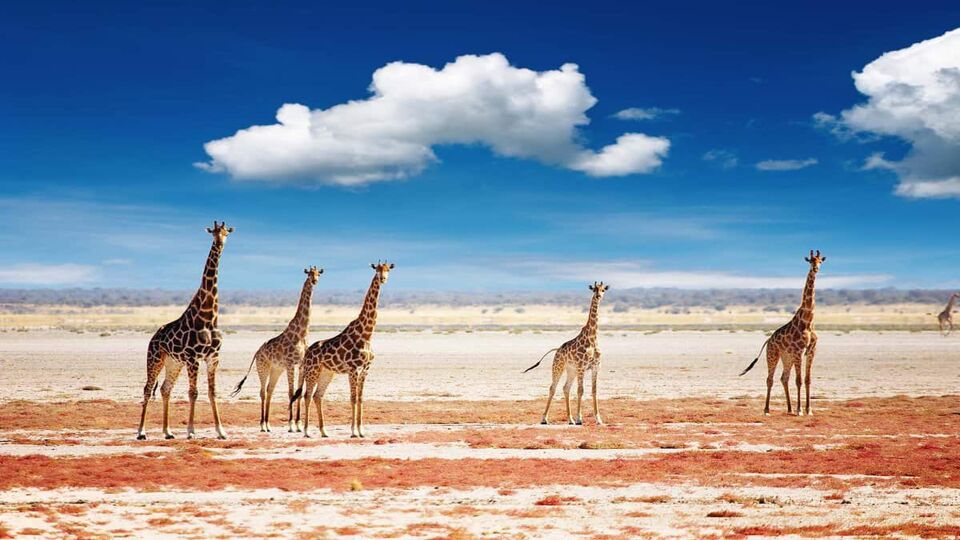Etosha National Park
Price €110
Min age 1
Rating 4.89 / 5 [84 ratings]
Tour supplied by:
Bucket list destination:
Etosha National Park, Oshikoto Region, Namibia

‘The Great White Place of Dry Water’ is easily Namibia’s most popular safari destination, and one of the finest game reserves in Africa. Established in 1907, the highlight of the 20,000sq km park is its namesake: a vast pan that – according to legend – was formed by the tears of a grieving widow.
Heavy rains can briefly fill the pan, transforming it into a haven of birdlife, but throughout the year waterholes and springs along its fringes attract the 114 species of mammal that call the Park home. Good for both self-drive and guided safaris, Etosha is Namibia’s greatest must-see.
The roughly-rectangular park is divided into two sections: the eastern two-thirds are open to the general public, while the western third is restricted to accredited tour operators and concessionaires.
In the east, a well-maintained network of gravel roads links rest camps with a number of waterholes, where you’ll find the best game viewing. Aside from viewing the Pan and spotting game, admire the spectacular African Moringa tree in a conservation area west of Okaukuejo.
Our selection of the best Viator tours of this destination, plus helpful tickets and transfers
Etosha National Park
Price €110
Min age 1
Rating 4.89 / 5 [84 ratings]
Tour supplied by:
Etosha National Park
Price €110
Min age 1
Rating 4.74 / 5 [31 ratings]
Tour supplied by:
Windhoek
Price ZAR 22,500
Min age 5
Rating 4.73 / 5 [19 ratings]
Tour supplied by:
Etosha is worth a visit at any time of the year, but Autumn (May to June) is best, when the bush is green, game is plentiful and the July holiday crowds haven’t yet arrived. Etosha is hot, dry and dusty in early summer (September to December), but the lack of water also concentrates game at the waterholes, leading to great sightings.
The opposite is true from January to April, when hot rainy days send humidity skyrocketing. The bushveld is beautifully green and the birding is excellent… but the game can be harder to spot.
Most visitors choose to drive the 550km from Windhoek to Etosha, as the B1 highway is tarred all the way and in good condition. Allow six hours for the journey. If you’re short on time, and staying at a lodge that offers guided safari drives, charter flights from Windhoek’s international airport are easily arranged.
Although guided safari drives are widely available, an extensive network of well-maintained gravel roads makes Etosha an accessible self-drive destination. There are two main gates to Etosha’s public section: Andersson in the centre of the southern boundary, and Von Lindequist on the eastern border.
Self-drive visitors must purchase a daily permit and sign in here before exploring the Park, or continuing on to pre-booked overnight accommodation. Remember that driving after dark is not permitted.
Aside from the private – and pricey – Dolomite Camp in the west of Etosha, Namibia Wildlife Resorts’ four camps are your best bet for sleeping inside the Park. There’s everything from camping to family chalets on offer, but at extortionate prices.
You’ll lose out on some of the wilderness feeling, but there’s far better value and comfort to be had at one of the many campsites, lodges and guesthouses just outside the Park gates.